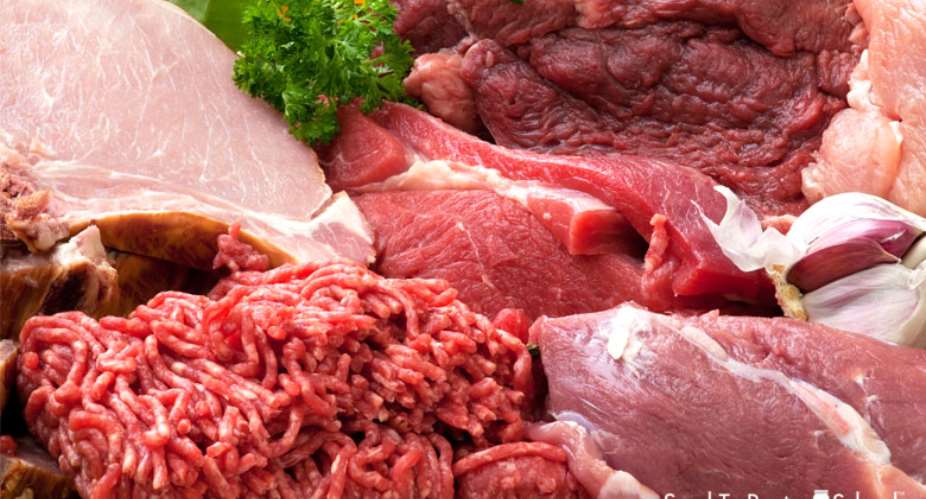Processed meat
Another large observation study by Iqbal et al.(2021) used 134,297 individuals and found that consuming at least 5.3 oz. (150 gm) of processed meat per week is linked to an increased risk of death and heart disease. An explanation for this was linked to high salt content(Grillo et al. 2019).
Unprocessed meat
Iqbal et al.(2021) found no association between unprocessed red meat consumption, even in amounts of 8.8 oz. (250 gm) or more per week in a study that involved more than 130,000 participants.
A previous study by O'Connor et al.(2017) found that eating half a serving (1.25 oz. or 35.4 gm) or more of unprocessed red meat daily does not affect heart disease.
Randomized controlled trials — considered a gold standard than observational studies support these results.
Difference
The difference in the amount of sodium used in processed vs unprocessed meat is substantial. There is a 400% larger sodium content in processed meat.
Excessive consumption of dietary salt can cause havoc to your blood pressure, making you prone to hypertension.
In other words, it is becoming a notable risk factor for heart and kidney problems.
Red meat and cancer
Observational studies (Farvid MS, 2018) found that processed and unprocessed red meat consumption is linked to an increased risk of some cancers, such as colorectal and breast cancer Mehta et al. 2019; Aykan NF. 2015).
The World Health Organization (WHO) cancer agency classified red meat as “probably carcinogenic to humans.” They also classified processed meat as “carcinogenic to humans,” explaining that processed meat has been shown to cause colorectal cancer.
Farvid et al. (2018) studies also found that people who eat high amounts of processed and unprocessed meats had a 9% and 6% greater risk of developing breast cancer, than those who consumed the lowest amount.
Some studies(Turesky et al. 2018) found that using nitrites to cure meat and smoking meats can produce carcinogenic (cancer-causing) compounds. High-heat cooking, such as grilling, could also create cancer-promoting compounds.
Processed Meat?
Processed products are any meats that have gone through the process of smoking, curing, salting, and the introduction of chemical preservatives. As a result, these products, like processed beef, are packed with salt.
Most examples of processed meats contain beef or pork. But, it’s not uncommon for them to feature other red meats, like liver, or meat by-products, such as blood.
Processed meat list
- Cured bacon
- Ham
- Hot dogs
- Salami
- Sausages
- Smoked meat
- Corned beef
- Cured and salted meat
- Beef jerky
- Dried meat
- Canned meat
Some of the most used chemicals in these consumables are heme and nitrates. Heme is a pigment mostly present in red meat. In contrast, nitrates are included when the meat is supposed to maintain its freshness for an extended period.
When cooked at very high temperatures, the meat also produces polycyclic and heterocyclic amines. Each of these chemicals is known to cause some amount of damage to the cells in the rectum and colon. As the damage keeps piling up, so does the risk of cancer.
Guo et al.(2015) suggest that the bigger the consumption rate of processed and red meat, the higher the odds of breast cancer. Processed meats, such as salami, bacon, and ham, are considered a Group 1 carcinogen.
To boost the food’s durability and amplify its taste and color, processed meats tend to have a lot of minced fatty tissue (e.g., sausages).
The more you enjoy them, the more extra salt you add to your system, which keeps piling up. This amplifies your risk of gaining a few extra pounds, heart disease, and unstable blood pressure, which are all key factors of CVD.
Take Home
Choose unprocessed always to improve your health. Options such as chicken(Marangoni et al. 2015) and turkey have solid nutritional quality, low collagen levels, and highly digestible proteins. They are packed with vitamins and can be a major component of a balanced diet.
NB:
Prof. Nyarkotey has strict sourcing guidelines and relies on peer-reviewed studies, academic research institutions, and medical associations to justify his write-ups. My articles are for educational purposes and do not serve as Medical advice for Treatment. I aim to educate the public about evidence-based scientific Naturopathic Therapies.
The writer is a Professor of Naturopathic Healthcare, a Medical Journalist, and a science writer. President, Nyarkotey University College of Holistic Medicine & Technology (NUCHMT)/African Naturopathic Foundation, Ashaiman, Ghana. E. mail: [email protected]. Visit-profnyarkotey.com for more.





 Cecilia Dapaah: Reasons behind AG’s advice to EOCO not grounded in law – Martin ...
Cecilia Dapaah: Reasons behind AG’s advice to EOCO not grounded in law – Martin ...
 NPP should have reported Kingsley Nyarko’s conduct to police – Inusah Fuseini
NPP should have reported Kingsley Nyarko’s conduct to police – Inusah Fuseini
 Akufo-Addo cuts sod for MIIF Technical Training Centre
Akufo-Addo cuts sod for MIIF Technical Training Centre
 NPP didn’t struggle to win Ejisu by-election – Samuel Ayeh-Paye
NPP didn’t struggle to win Ejisu by-election – Samuel Ayeh-Paye
 A/R: Achiase Chief arrested for acid attack on community members
A/R: Achiase Chief arrested for acid attack on community members
 Naa Ayemoede returns to school
Naa Ayemoede returns to school
 Dadieso residents block Accra-Kumasi highway
Dadieso residents block Accra-Kumasi highway
 Kasoa soldier killer remanded
Kasoa soldier killer remanded
 Rashid Pelpuo slams Opoku Prempeh for denying dumsor
Rashid Pelpuo slams Opoku Prempeh for denying dumsor
